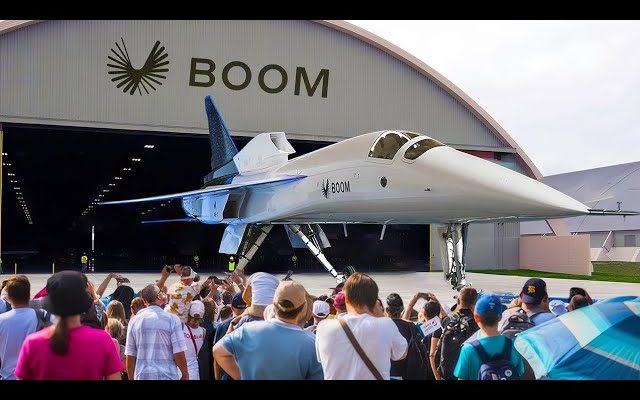The U.S. aerospace company, Boom Supersonic, has marked a monumental achievement with the successful test flight of its XB-1 supersonic aircraft. This historic flight, conducted on January 28, 2025, over the Mojave Desert in California, signifies the first time in over two decades that a new supersonic aircraft has broken the sound barrier. Dubbed the “Son of Concorde,” the XB-1 reached speeds of Mach 1.1, approximately 844 mph, taking a major step forward in reviving commercial supersonic air travel.
Design and Development
The XB-1 is an experimental aircraft designed by Boom Supersonic to serve as a technology demonstrator for its larger, future commercial supersonic airliner, the Overture. Developed by a team of engineers and aviation experts since the company’s founding in 2014, the XB-1 is a sleek, single-seat aircraft featuring a delta-wing design optimized for high-speed flight. It is powered by three General Electric J85-21 turbojet engines, producing a combined thrust of 53 kN, enabling the jet to achieve supersonic speeds with impressive efficiency.
Unlike the Concorde, which was a joint venture between Britain and France, the XB-1 is part of Boom’s mission to make supersonic travel more accessible and sustainable in the 21st century. The aircraft is designed to gather essential data that will inform the development of the Overture, a commercial airliner capable of carrying 64-80 passengers at speeds of up to Mach 1.7. This will enable flight times to be significantly reduced—such as cutting the journey from New York to London to just 3.5 hours.
First Supersonic Flight Achievements
The XB-1’s first supersonic test flight was a resounding success, with the aircraft exceeding Mach 1.0 for the first time. Piloted by Boom Supersonic’s Chief Test Pilot, Tristan “Geppetto” Brandenburg, the flight over the Mojave Desert provided valuable insights into the aircraft’s performance and stability at high speeds. This flight is not just a technical milestone but also serves as a crucial step toward the eventual launch of the Overture, which Boom plans to have in commercial service by 2029.
The XB-1’s design and performance are key to overcoming the challenges of supersonic travel, such as the sonic boom and fuel efficiency. Boom has been working with the Federal Aviation Administration (FAA) and other regulatory bodies to ensure that future supersonic commercial aircraft, like the Overture, can operate within noise and environmental regulations, thus avoiding the limitations that hindered the Concorde.
Implications for the Future of Supersonic Travel
The successful flight of the XB-1 brings the promise of a new era in aviation closer to reality. Supersonic travel was once thought to be a thing of the past, but the XB-1 demonstrates that innovation, combined with advances in materials and propulsion technologies, can make it feasible once again. Boom Supersonic is already in talks with major airlines, including American Airlines, United Airlines, and Japan Airlines, who have pre-ordered the Overture, signaling strong market interest in high-speed air travel.
The Overture is poised to revolutionize long-haul flights, providing passengers with faster, more efficient options that dramatically reduce travel times. In addition, the test flight of the XB-1 is an important milestone not only for Boom Supersonic but for the broader aerospace industry, as it proves that the dream of high-speed commercial air travel is very much alive.
Next Steps and Future Testing
The XB-1 will undergo additional tests and refinements to gather data that will guide the final design of the Overture. While the aircraft has made significant strides, there is still work to be done in areas like noise reduction, fuel efficiency, and safety. With the successful test flight of the XB-1, Boom Supersonic is on track to transform the future of air travel, making supersonic flights a reality for the modern world.



